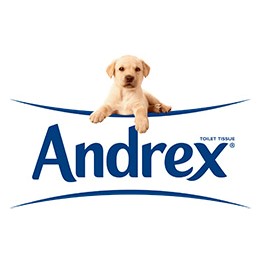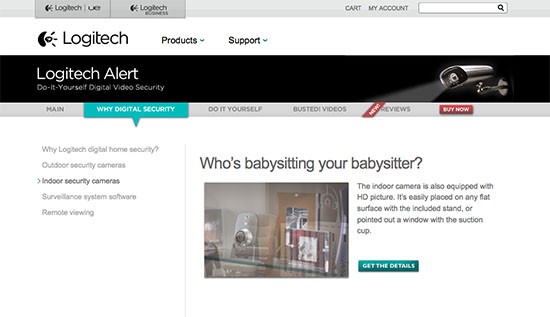Today, if a business wants to stand any chance of reaching a wide audience – let alone “going viral” – it must utilise the sympathetic connections forged through emotional marketing.
The reason for this is simple – our modern world is absolutely jam-packed with advertisements from all corners. Whether watching TV, listening to the radio, reading a newspaper or browsing the web, ads are flying at us left, right and centre.
A study by Media Dynamics revealed that in 2014, the average number of advertisements an adult is exposed to on a daily basis stands at 362. That’s a tremendous amount. However, so accustomed are we to such exposures that we’re essentially blind to more than half of them, with only 153 being “noted” in an average day. And indeed, the saturation is so numbing that far fewer are impactful enough to be recalled (how many of the 150 ads you noted yesterday can you remember?).

(Image source: sjinsights.net)
Other studies claim that the ubiquity of marketing messages is even greater. It is reported in the New York Times, for instance, that Yankelovich, a market research firm, estimates that a person living in a city is exposed to up to 5,000 ad messages a day. This much higher figure takes into account all the labels on items in shops, the junk mail that comes through our doors, the cars that pass us by, the labels on the clothes we wear, etc.
The result is a complete sensory overload. And yet, all businesses still need to market their products and services, right? And so the question is, what can we do as inbound marketing strategists to ensure our messages stand out from all the soulless clutter?
Answer: put the soul back into them.
Making an Impact with Emotional Marketing
Today, simply selling a product or a service is no longer enough – we’ve got to provide an experience that goes with it. This experience starts with how we market our products, services and brands, and is determined by our abilities to forge an emotional connection with our audiences. And the only way to start to form emotional connections is through emotional marketing.
Emotions play a huge role in how consumers make decisions. In fact, according to a Forrester Research consumer survey, a full 50% of every buying decision is driven by emotion.

(Image source: missdetails.com)
And this figure stands up to scientific scrutiny. According to Psychology Today, “MRI neuro-imagery shows that when evaluating brands, consumers primarily use emotions (personal feelings and experiences) rather than information (brand attributes, features, and facts).”
And it’s not hard to understand why – choice overload. Let’s think about an everyday commodity that (we hope!) we all use as an example – toilet rolls. Walk down the toiletries aisle of any supermarket and you’ll be presented with a panoply of branded options to choose from. You’ve got the supermarket’s own branded range, plus offers from Andrex, Velvet, Cushelle, Soft Cell, and various others.
All of these toilet rolls offer the exact same practical benefits to consumers (you know what they are, so we’ll spare you the gory details), and they are all even made from the same basic ingredients. Indeed, when it comes down to it, there is in fact no real choice at all between these offerings.
So what is it that makes one of them the number 1 non-food brand in the UK?
That’s right – the adorable, super-cute, doe-eyed and endearingly mischievous Andrex puppy.

(Image source: andrex.co.uk)
Aww – look at that. Doesn’t it just make you feel all warm and cuddly inside? Isn’t there something calming, comforting, homely, and undeniably soft about it?
There is. Of course there is. Because that’s how we naturally feel about cute baby animals.
As for toilet paper – not so much.
And of course, there is the trick right there. Andrex are brilliantly using emotional marketing to instil all these feelings and all of a puppy’s likeability into a product that is in essence no different to its neighbour on the supermarket shelf. And that, indeed, has made big bucks for the company.
Marketing Emotions
The same Psychology Today article mentioned above also cites research from the Advertising Research Foundation which concludes the same thing – that the “emotion of ‘likeability’ is the measure most predictive of whether an advertisement will increase a brand’s sales.”
With so many studies in agreement on this matter – i.e. that emotions (rather than rational judgements) are the main driving force behind purchase decisions – emotional marketing must form a key role in any marketing strategy.
But what emotions can be stirred through emotional marketing to make those all-important personal connections with our customers? Well, to cite yet more research (psychology is a scientific field, after all), the Institute of Neuroscience and Psychology at the University of Glasgow reveals that all human emotion is based on just four basic emotions: happy, sad, afraid/surprised and angry/disgusted.
So let’s finish by taking a quick look at each and an example or two of how brands around the world use emotional marketing to make their messages stand out and connect with their customers.
Happy
Emotional marketing that appeals to happiness is one of the most powerful moves a company can make. We all know how a brand like Coca-Cola targets happiness with its “Share a Coke” and “Taste the Feeling” campaigns – but such emotional marketing is not excluded from tech brands.
Take a look at how HubSpot markets happiness. Notice in the video below how the emotional marketing works to create a sense of belonging and unity amongst customers – the essence of happiness indeed.
Sad
Sadness is an emotion that helps us connect and empathise with one another. When a story stirs us to sadness, the hormone oxytocin is produced, which helps us feel empathy with the subject of the story, and makes us more susceptible to advertising.
This is according to Paul Zak, PhD, at Claremont Graduate University in California, who led a research programme into the effects that oxytocin has on consumers. The team found that the more of the hormone that gets released, the more empathetic people felt towards advertisements
"Our results show why puppies and babies are in toilet paper commercials,” said Zak. “This research suggests that advertisers use images that cause our brains to release oxytocin to build trust in a product or brand, and hence increase sales."
Now we know the secret to the Andrex puppy’s success.
Afraid/Surprised
When we’re afraid, a sense of urgency is created which can cause us to take actions that we might not otherwise have taken.
And this is precisely why fear can be so useful in terms of emotional marketing, for it can give us the perception of a vulnerability, which we might indeed be surprised to learn that we had.
Here’s how Logitech taps into a fear that parents have about the safety of their children when advertising their indoor security cameras – all summed up in one fear-inspiring headline: “Who’s babysitting your babysitter?”

(Image source: blog.crazyegg.com)
This is of course an extreme example – but don’t forget that the “fear of missing a great deal” can be built into almost any type of limited offer campaign.
Angry/Disgusted
Arousing anger or disgust might not seem like a very sensible thing to do. However, it’s all about how you do it.
When it comes to emotional marketing, we need to think about what might make our customers angry – not angry in a way that they want to go out and smash something, but perhaps angry at a situation that might make them choose our solution over our competitors’.
Spending more money than we have to is something that makes us angry. Unnecessary inconveniences also give consumers something to be angry about. Dollar Shave Club tapped into both of these vexing issues in their now-famous video marketing campaign.
Notice how the narrator (Mike) stirs up anger that men are spending too much on their shaving razors, suggesting that most of that money goes to overpaid sports stars who are used to advertise the products. It’s very clever – not least because this anger is almost masked by the humour of the video, which of course stirs separate emotions of happiness and connectedness. Brilliant.
Back to You
Emotional marketing means that you need to first find the emotional benefit of your business. It may not be obvious at first, but, with some thought and research into what your competitors are doing, you will be able to unearth it. And with the emotional benefits established, an inbound strategy that includes emotional marketing is what is going to make your brand stand out against all others – and that’s exactly what you want.










